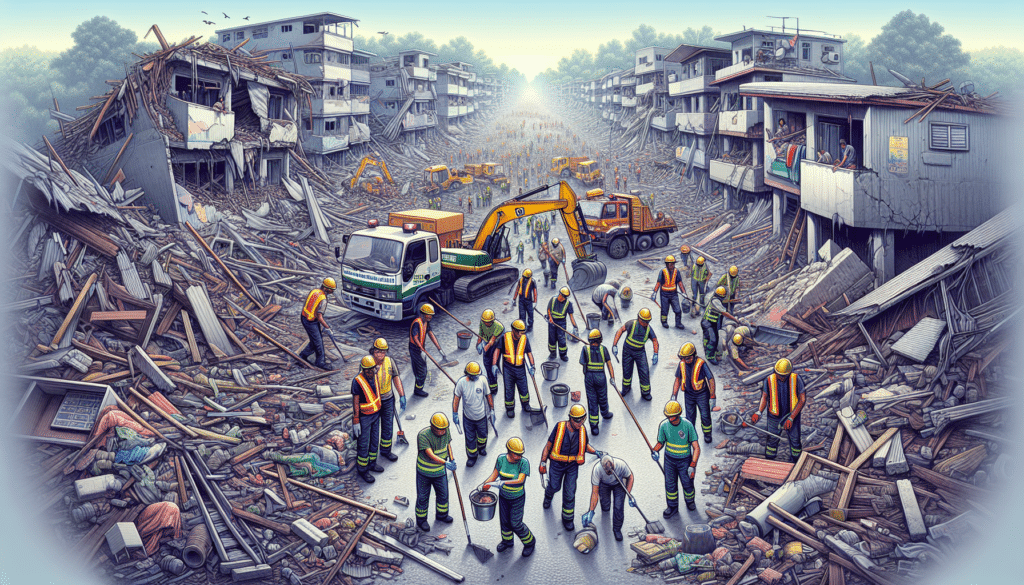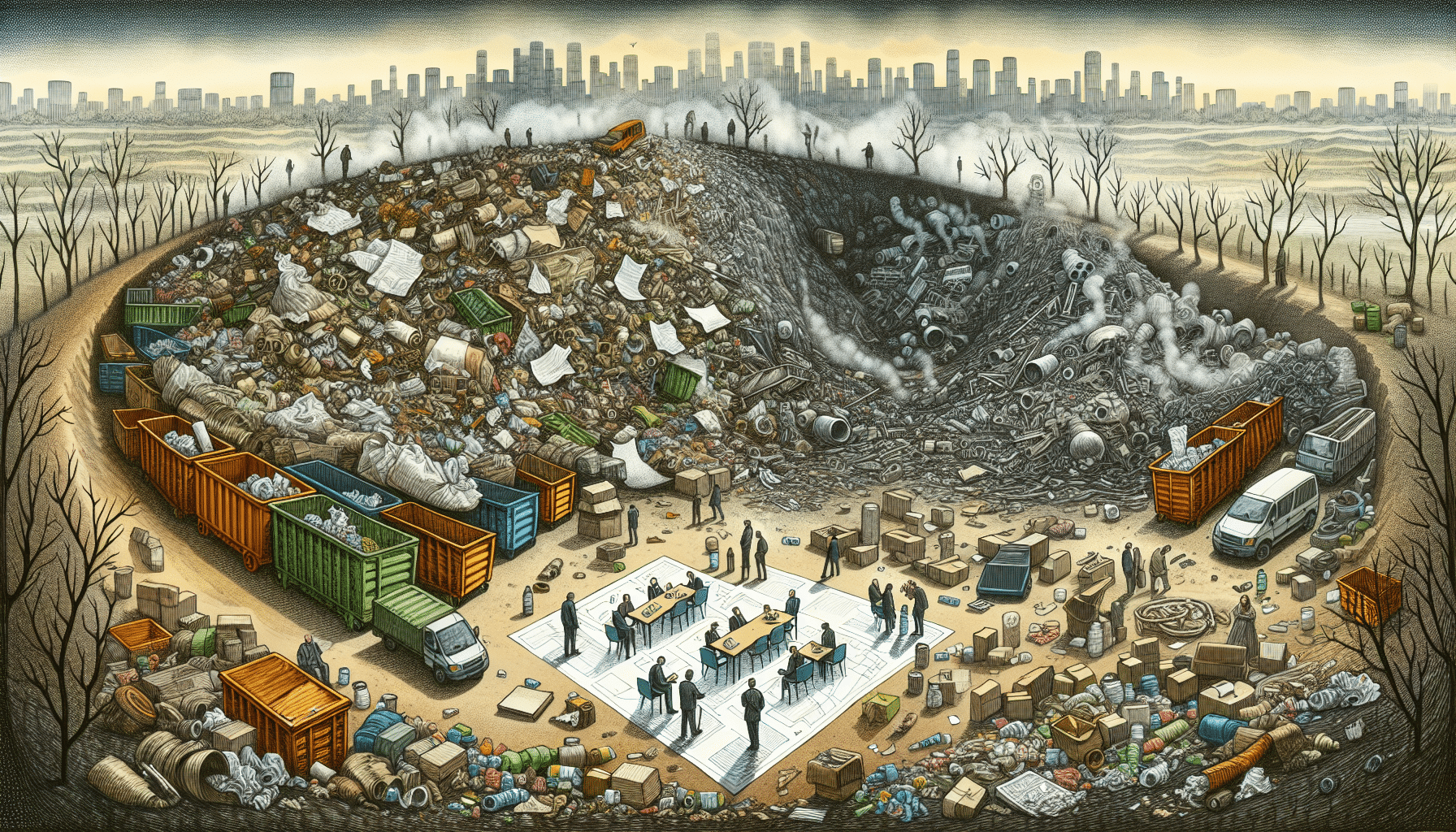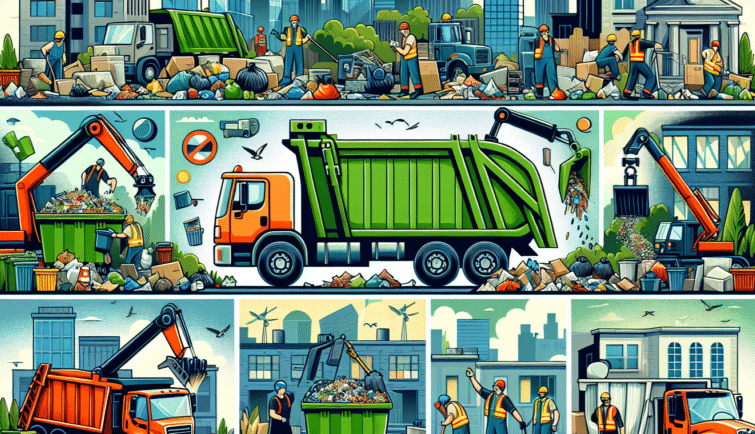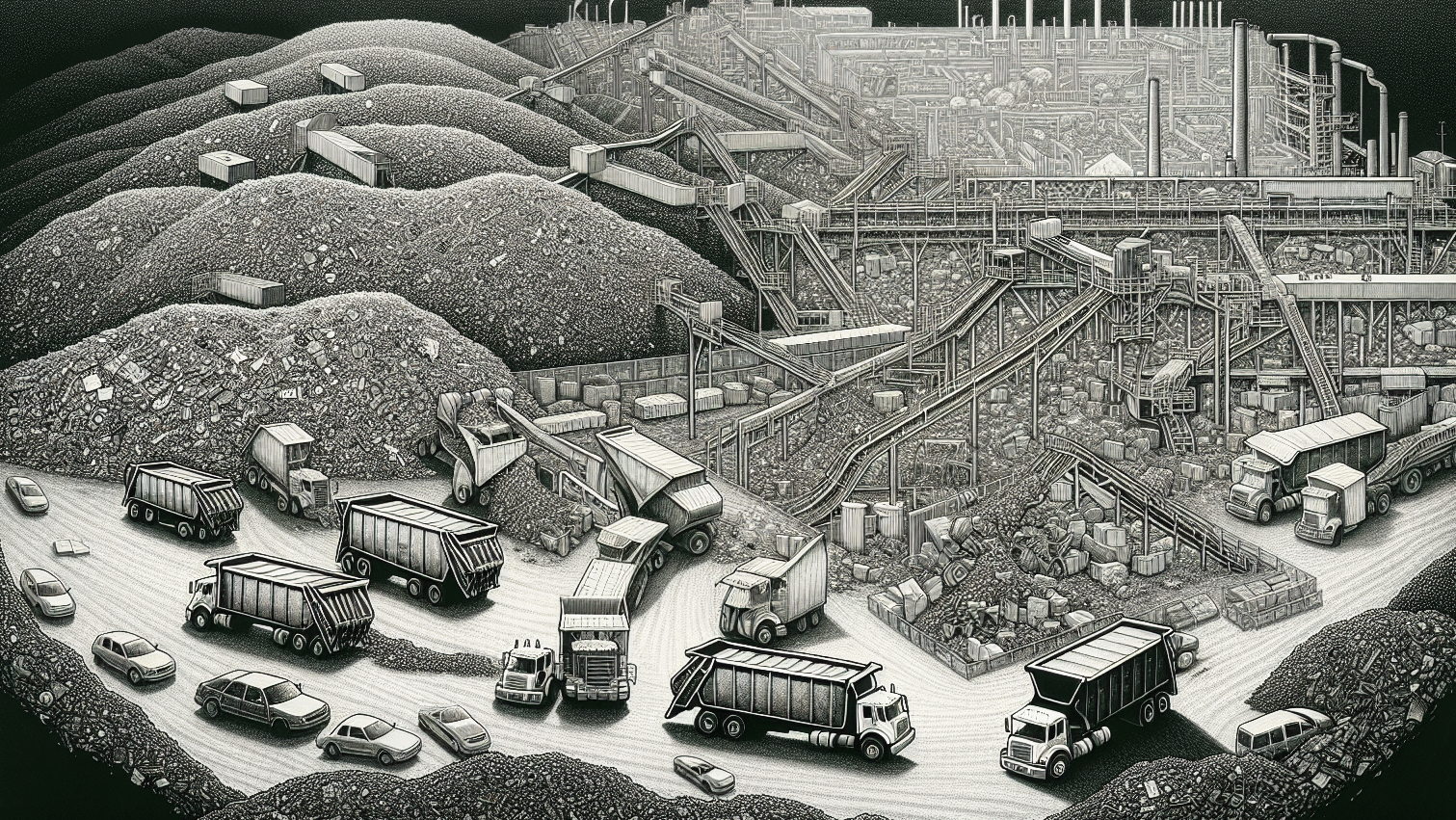If you’re overwhelmed by the task of debris removal after a disaster, debris removal FEMA assistance may be available. Understanding if you qualify and how to request FEMA’s help is key to managing this daunting task. This guide outlines the critical steps involved in the FEMA debris removal assistance process, from initial application to actual cleanup, ensuring your path to recovery is clear and supported.
Key Takeaways
- FEMA provides funding for debris removal post-disaster, particularly when it poses a threat to public health, safety, or economic recovery. There are certain criteria for eligibility such as the necessity for health and safety and verification of property ownership.
- Insurance policies may cover debris removal to an extent, usually limited to 25% of the insurer’s liability. FEMA cannot fund debris removal costs already covered by insurance or other sources, and excellent documentation is essential for both insurance and FEMA claims.
- Health and safety during debris removal are paramount, requiring the use of personal protective equipment and adherence to environmental and health regulations. Local officials are responsible for public safety and FEMA offers guidelines for vegetation removal and coordinates with local governments.
Understanding FEMA’s Role in Debris Removal

FEMA’s role in debris removal involves cleanup coordination as well as approving funding for debris removal, particularly when the debris poses a threat to public health, safety or the community’s economic recovery. FEMA suggests an organized approach to debris management and encourages homeowners to categorize items by type, placing them in separate piles at the roadside for removal. The scope of debris removal under FEMA’s purview is quite extensive, covering a variety of debris types, from trees, sand, gravel, building wreckage, to vehicles and personal property.
FEMA’s Assistance Criteria
Eligibility for FEMA’s debris removal assistance hinges upon certain criteria. The primary criteria are that the debris removal should be a public health and safety hazard and be carried out by an eligible applicant. Commercial properties are excluded from this criteria. Verification of residency and homeownership is another prerequisite for receiving FEMA assistance for disaster relief. Such verification can be substantiated through documents like rent receipts, driver’s licenses, deeds, or property tax receipts.
The Process of Requesting Help
Applying for FEMA’s assistance for debris removal requires completing a Right-of-Entry form. This form grants temporary access to your property, thereby enabling authorized contractors to perform debris removal tasks. Upon completion of the Right-of-Entry form, authorized contractors receive permission to perform debris removal on your property.
Impact on Community Recovery
Although it may seem mundane, debris management significantly influences community recovery following a disaster. Local and federal authorities collaborate on post-disaster debris removal efforts that allow intervention on private property, especially when it threatens public health or hinders economic rebuilding.
In severe disaster situations, FEMA may extend funding for the removal of debris from private properties, provided it is deemed crucial for the health and economic recovery of the community. Such clearing of debris from private properties equips communities to navigate the economic challenges post-disaster, leading to more efficient rebuilding and recovery efforts.
Clarifying Coverage: FEMA vs. Insurance
While insurance policies may include debris removal coverage, it is typically limited to 25% of the insurer’s liability for the direct property loss due to a covered cause, and must generally be claimed within 180 days of the event. FEMA cannot provide funding for debris removal if another source, such as insurance or aid organizations, has already covered the expenses. Property owners who receive insurance proceeds specifically for debris removal are required to use those funds to offset the costs of the government-sponsored debris removal program. While private property debris removal can be reimbursed by FEMA, it requires prior approval and must meet certain conditions like threat to public safety and interest and legal authority for removal.
Documentation Requirements
Documentation is key to the debris removal process, particularly for insurance claims and FEMA assistance. Property owners should meticulously document all damage through photographs from various angles and videos to substantiate insurance claims and applications for FEMA assistance. The documentation should include proof of loss, evidence of property ownership, and documentation of the actual damages.
For making insurance claims related to debris removal, property owners additionally must:
- Submit a contractor’s estimate within 180 days following the incident.
- Understand that debris removal often falls under additional coverage in insurance policies, not the basic policy, and may have exclusions, such as for pollutants.
- Document damages and costs accurately to ensure eligibility for FEMA assistance or insurance coverage for debris removal.
Understanding Your Policy
A thorough review of your insurance policy can help determine the specifics of coverage for debris removal, which may necessitate consulting an agent for clarification or to adjust coverage limits. Debris removal costs are typically covered in addition to the value of the damaged property, up to the policy limits, with some policies offering additional coverage beyond these limits under certain conditions.
Policyholders are advised to:
- Promptly file a claim for debris removal and insurance settlements.
- Document recognizable damaged items.
- Ensure the insurance company inspects the loss site before debris removal begins.
While insurance policies may provide additional coverage for debris removal, FEMA assistance operates under certain conditions offering reimbursement.
Safety First: Health and Safety Precautions During Debris Removal

Health and safety must be prioritized during debris removal to safeguard individuals and the environment. When cleaning up debris post-disaster, it is imperative to wear personal protective equipment (PPE) such as hard hats, eye protection gear, work gloves, long sleeves and pants, and steel-toed boots.
Respiratory protection is equally crucial to protect against the inhalation of harmful particles. Compliance with health and safety precautions during the process of removing debris is necessary for workplace safety. Debris removal can expose individuals to unique hazards, such as sewage, requiring additional protective gear like rubber boots, rubber gloves, and goggles.
Protecting Public Health
Local officials bear the responsibility of safeguarding public health for residents during debris removal. Emergency managers at the local level serve as points of contact for property owners needing assistance with hazardous debris that could pose a public health or safety threat. Property owners who choose not to participate in FEMA’s program must still remove hazardous debris in a timely manner, adhering to local, state, and federal standards.
Personal Protective Measures
While the oversight of public health and safety falls to local officials, individuals participating in debris removal must take appropriate personal protective measures. Workers should use hearing protection when dealing with noise hazards associated with debris removal tasks, such as operating machinery. Additional PPE such as chaps, face protection, and waterproof gloves might be necessary when handling specific equipment like chainsaws or when exposed to contaminated water. Adopting these measures is essential for safeguarding individual health and safety during debris removal.
Dealing with Vegetation: FEMA Tree Removal Guidelines

Disasters often result in broken and uprooted trees, which necessitate removal. FEMA provides guidelines for tree removal, including specific criteria for eligibility. Trees qualify for removal by FEMA if they are damaged due to a disaster, at least 6 inches in diameter, measured at least 4.5 feet above ground, or have a split trunk, broken canopy, or are leaning over 30 degrees. Trees with at least 50 percent of the root-ball exposed due to a disaster may also qualify for removal, and the exposed root-ball may be eligible for filling. When FEMA approves tree and root-ball removal, contracted services will have a single unit cost that includes both components.
Streamlining the Cleanup: Local and Federal Coordination

Efficient debris removal requires coordination between local managers and federal officials such as FEMA to guarantee efficiency, effectiveness, and adherence to regulations. Local governments, public works, and disaster management agencies are integral to coordinating debris removal efforts following disasters. Community and individual actions also play a significant role in hastening the recovery process and reducing cleanup costs. Sorting and moving debris curbside, for instance, can greatly aid in the cleanup process. The designation of eligible areas for FEMA-funded private property debris removal results from the collaborative effort of FEMA with state and local governments.
The Role of Local Officials
Local officials work closely with state governments and agencies like the department of transportation to provide necessary resources for debris removal. Local officials are also tasked with the duty of organizing the disposal of disaster-related debris that private property owners place at specified collection points.
In addition, local officials guide property owners on safety protocols and the categorization of debris for disposal. They oversee debris removal operations within their jurisdiction, including:
- Monitoring contractor performance
- Certifying the eligibility and quantity of debris collected
- Ensuring compliance with public health and safety standards.
FEMA’s Support Structure
FEMA’s support structure goes beyond simply providing financial aid for debris removal. FEMA provides guidance and technical assistance to local governments, helping them develop procedures for efficient and environmentally sound debris management. In addition to guidance, FEMA offers financial support to local municipalities tasked with debris removal post-disaster.
Moreover, FEMA requires local governments to monitor all contracted debris operations to ensure that only eligible debris is removed and to properly substantiate claims on invoices. Inadequate monitoring of debris removal efforts can jeopardize the applicant’s eligibility for Public Assistance funding from FEMA. Thus, FEMA’s support structure is both a boon and a responsibility for local governments.
Financial Aspects: Public Assistance Funding for Debris Removal

FEMA offers Public Assistance funding for eligible debris removal, helping communities recover after disasters. Eligibility for this funding depends on several factors, including the absence of insurance coverage for debris removal. Property owners without insurance coverage for debris removal can apply for FEMA’s debris removal assistance at no personal cost. This financial assistance can be a lifeline for many homeowners struggling to manage the costs of debris removal post-disaster.
Eligibility and Application
Eligibility for FEMA’s debris removal program is available to property owners who do not have insurance coverage for debris removal. While the financial aspects of disaster recovery can seem complex, with FEMA’s assistance, the path to recovery may be shorter than you think.
Managing Costs and Reimbursement
Accuracy is of utmost importance in managing costs and securing reimbursement. Local entities must maintain accurate and timely documentation and follow FEMA guidelines to ensure they receive maximum reimbursement for debris removal expenditures as a direct result of their efforts. This rigorous documentation process, though tedious, is crucial to secure FEMA reimbursement.
Summary
Knowledge is power – understanding your insurance policy, following FEMA guidelines, and coordinating with local officials can make the process of debris removal less stressful and more effective. With the right information and resources, you can turn the daunting task of post-disaster cleanup into a manageable process, paving the way for a more efficient recovery.
Frequently Asked Questions
What is FEMA’s role in debris removal?
FEMA plays a crucial role in providing funding, assistance, and guidance for debris removal after disasters, particularly when the debris poses risks to public health, safety, or community recovery.
How can I apply for FEMA’s debris removal assistance?
To apply for FEMA’s debris removal assistance, homeowners need to fill out a Right-of-Entry form to grant temporary access for debris removal on your property.
What’s the difference between FEMA assistance and insurance coverage for debris removal?
FEMA funding for debris removal cannot be provided if insurance or aid organizations have already covered the expenses, as insurance may include limited debris removal coverage that must be claimed within 180 days of the event.
What safety precautions should be taken during debris removal?
When removing debris, make sure to wear personal protective equipment (PPE) such as hard hats, eye protection, heavy work gloves, long-sleeved shirts, and steel-toed boots with insoles, as well as respiratory protection like an N-95 respirator.
What are the criteria for tree removal by FEMA?
Trees qualify for removal by FEMA if they meet specific criteria, including being damaged due to a disaster, having a diameter of at least 6 inches, and showing signs of damage such as a split trunk, broken canopy, or leaning over 30 degrees.





































































































